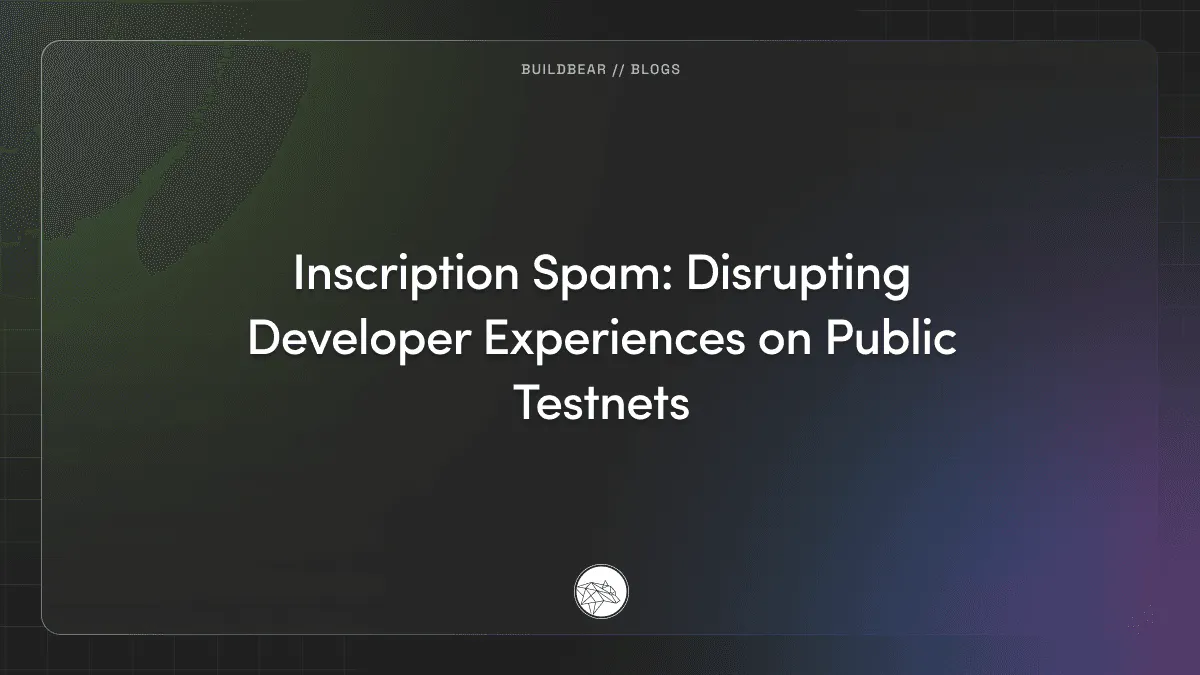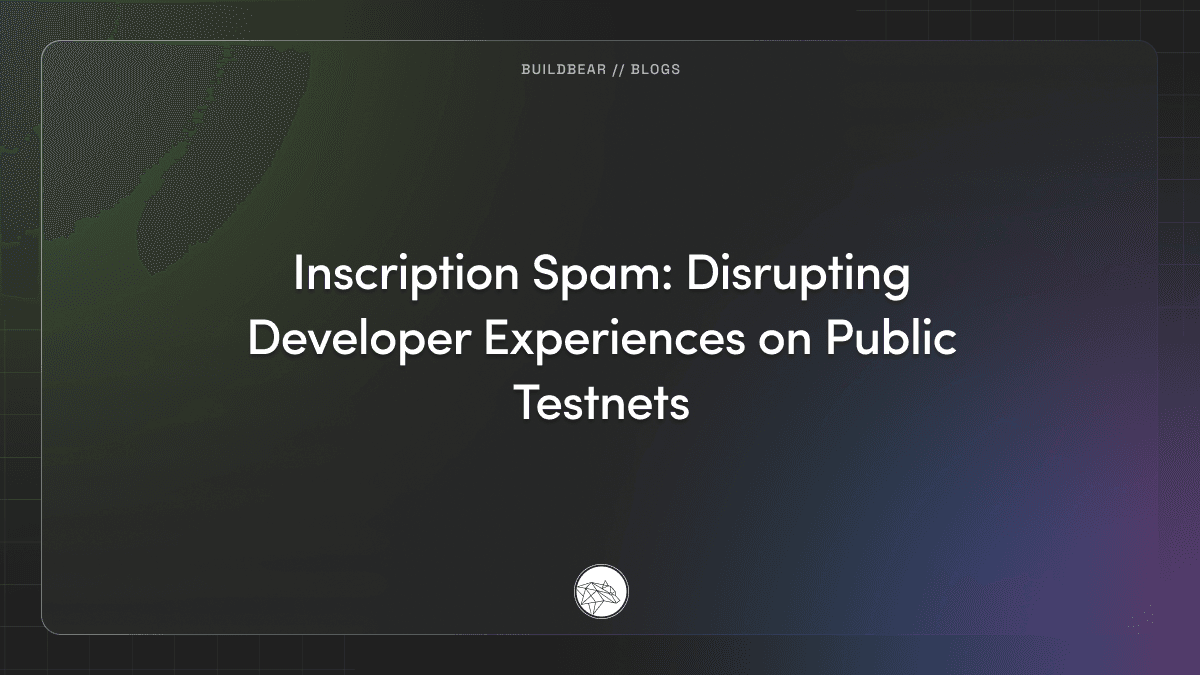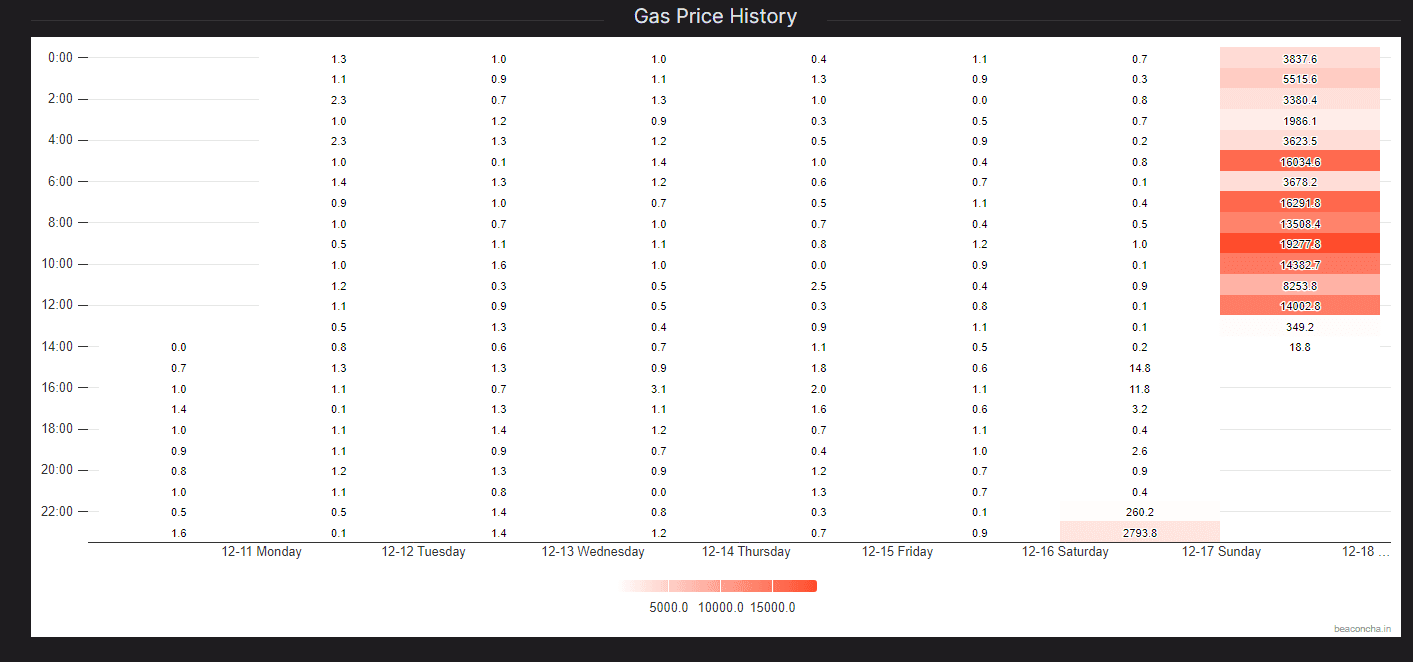Inscription Spam: Disrupting Developer Experiences on Public Testnets
 BuildBear
BuildBearTable of contents

This article was first published on the BuildBear website at https://www.buildbear.io/blogs/Inscription_Spam

Due to the growing popularity of inscriptions, gas prices on the Goerli testnet have surged to over 19,000 GWei. Similar spikes in gas prices have been observed on Sepolia, Optimism Goerli, and Arbitrum Goerli.

Data from: goerli.beaconcha.in/gasnow
Deployment and Testing of DApps have become increasingly challenging as a result of the high gas prices and other limitations inherent to public testnets.
These limitations include:
Contract Confidentiality: Public testnets lack privacy, which may expose sensitive details of smart contracts.
Transaction Confirmation: Slow transaction processing on public testnets can lead to development delays.
Token Accumulation: Acquiring sufficient testnet tokens for thorough testing can be a lengthy process.
Mainnet Testing: Replicating existing mainnet protocols for testing on public testnets can be complex and time-consuming.
Choose BuildBear for Enhanced DApp Development.
BuildBear offers several advantages that can significantly accelerate DApp development:
Mainnet State: BuildBear allows for the forking of mainnets and instant sandbox creation. This feature simplifies testing with mainnet protocols, eliminating the need for simulated environments.
BuildBear Faucet: Access native and popular ERC20 tokens instantly through the BuildBear Faucet. This tool eliminates the tedious process of manual token collection.
Transaction Speed: BuildBear's transaction processing is four times faster than on public testnets, which greatly reduces the time taken for contract test script runs.
Private Sandbox: BuildBear ensures that all contract and transaction data remain confidential, and accessible only to authorized users.
Advanced Testing Features: BuildBear's testnet offers unique testing capabilities like time manipulation, snapshot captures, Chainlink token price adjustments, and account impersonation for testing unusual scenarios, which are not available on public testnets.
Here is a detailed overview of the inscriptions
Inscriptions are a form of digital artifacts. They represent a unique blend of technology and creativity, where information is embedded directly onto the blockchain via Ethereum calldata. This innovative approach has revolutionized how digital assets are created, traded, and perceived in the blockchain world.
How Inscriptions Work
It involves converting an image or a piece of digital art into a data URI format, which is then transformed into a hexadecimal representation. This hex data is subsequently embedded into the Ethereum blockchain through a zero-ether (0 ETH) transaction. The uniqueness of each Inscription is paramount; only those with distinct hex data are considered valid and are thus immortalized on the blockchain.
Why Are Inscriptions Rising in Popularity?
Inscriptions have seen a surge in popularity for several reasons. They are more affordable to transfer than traditional methods, thanks to their efficient use of Ethereum's calldata. This affordability has made them popular for trading. Moreover, their trustless nature aligns well with the security-conscious ethos of the crypto community. The ability to attach images directly to the Ethereum blockchain has also opened new avenues for investment, collection, and even gaming.
Inscriptions vs. Traditional NFTs
While Inscriptions share some similarities with traditional Non-Fungible Tokens (NFTs) on the Ethereum network, there are key differences:
Direct Blockchain Embedding: Unlike NFTs, which are typically managed via smart contracts, Inscriptions embed data directly into the Ethereum blockchain, making the data itself an NFT.
Unique Creation Process: The process of creating Inscriptions is distinct and offers a new approach to digital asset generation.
How to Create Inscriptions?
Creating Inscriptions is a straightforward process:
Select an Image: Choose the image you want to convert into an Ethscription.
Convert to Data URI: Convert the image into a data URI format using online tools like Image to Data URI converter.
Hexadecimal Conversion: Convert the data URI into a hexadecimal representation.
Execute a 0 ETH Transaction: Use this hexadecimal data in the Hex data field of a 0 ETH transaction to create your Ethscription.
How to Transfer Inscriptions?
Transferring an Ethscription involves a few simple steps:
Identify the Ethscription: Locate the Ethscription ID, which is the transaction hash of the creation transaction.
Initiate Transfer: Make a 0 ETH transaction to the new owner, including the Ethscription ID in the Hex data field.
Verification: Once the transaction is complete, the ownership of the Ethscription will update, transferring it to the new owner.
In conclusion, the surge of Inscription spam on Public Testnets poses a significant challenge, disrupting the workflow of blockchain developers. While Inscriptions are innovative, their unintended impact on Testnet functionality highlights the need for better tooling in the web3 space.
Simplify DApp development and testing with BuildBear!
BuildBear empowers you with:
Instant Sandboxes: Create a custom sandbox tailored to your specific needs in seconds.
Dedicated Faucets: Never run out of test funds with built-in faucets for each sandbox.
Blazing Fast Transactions: Experience lightning-fast transaction speeds for smooth development and testing.
User-Friendly Explorer: Debug with ease using a clear and intuitive blockchain explorer.
Plus, many more features: Explore a comprehensive suite of tools and functionalities to streamline your DApp development workflow.
Subscribe to my newsletter
Read articles from BuildBear directly inside your inbox. Subscribe to the newsletter, and don't miss out.
Written by

BuildBear
BuildBear
BuildBear is a platform for testing dApps at scale, for teams. It provides users with their own private Testnet to test their smart contracts and dApps, which can be forked from any EVM chain. It also provides a Faucet, Explorer, and RPC for testing purposes.